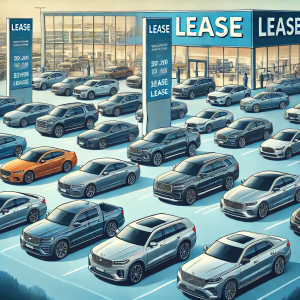Deciding on Residual Value: Exploring Car Lease Buyout Options

Vehicle leasing offers a flexible alternative to traditional car ownership, providing Canadians with temporary vehicle possession through monthly lease payments. As the end of a car lease approaches, lessees encounter critical decisions regarding their vehicle’s future. Factors such as mileage allowances, wear and tear, and lease-end fees must be carefully considered. Chief among these decisions is whether to buy out the lease or return the vehicle to the dealership, a choice influenced by the lessee’s satisfaction with the vehicle, its current condition, and financial considerations.
After the car lease term ends, individuals must weigh the pros and cons of buying out the lease versus returning the vehicle to the dealership. This decision-making process is informed by various factors, including the lessee’s satisfaction with the vehicle, its current condition, and financial considerations. By carefully evaluating these factors, lessees can determine the most suitable option for their needs and circumstances.
Understanding How Leases Work
Definition and Working Mechanism
In Canada, a vehicle lease operates as a temporary arrangement between a lessee and a lessor. Throughout the lease term, the lessee makes monthly payments to utilize the vehicle for a set duration. Upon the lease’s conclusion, the lessee has the option to return the vehicle or purchase it at a predetermined price, as specified in the lease agreement.
Reasons for Leasing Vehicles
Many Canadians opt to lease a car for various reasons, including:
- Affordability: Leasing typically involves lower initial costs and monthly payments compared to outright purchasing.
- Access to Newer Models: Lessees can enjoy the latest vehicle features and technologies without committing to long-term ownership.
- Flexibility: Leasing offers the flexibility to upgrade to a new vehicle at the end of the lease term, providing an opportunity to adapt to changing needs or preferences.
- Tax Benefits: Lease payments may be tax-deductible, particularly for businesses utilizing vehicles for commercial purposes.
Lease Residual Value: Definition and Calculation
In Canada, the lease residual value refers to the estimated worth of a leased car at the end of the lease term as specified in the lease agreement. It represents the anticipated depreciation of the vehicle during the lease period and plays a crucial role in determining monthly lease payments. Essentially, the residual value serves as the baseline for calculating how much the lessee pays to utilize the vehicle over the lease term.
One common method for calculation is determining the percentage of the vehicle’s Manufacturer’s Suggested Retail Price (MSRP). This percentage is influenced by various factors, including the anticipated depreciation rate of the vehicle model, the lease term duration, and market conditions. Example: If a vehicle has an MSRP of $40,000 and a residual lease value of 50% for a 36-month lease, the residual value would be $20,000.
Additionally, factors such as vehicle usage, mileage allowances, and wear and tear guidelines may also impact the calculation of the lease residual value.
Pros and Cons of Buying Out a Lease
Advantages
- Familiarity: Ownership provides continuity and familiarity.
- Cost Savings: Buying out a lease may result in savings over time.
- Convenience: Ownership offers flexibility and customization options.
- Investment: Purchasing the leased vehicle allows building equity for potential resale.
Disadvantages
- Purchase Price: The buyout price may exceed the vehicle’s market value.
- Maintenance Costs: Owners are responsible for all maintenance expenses.
- Depreciation: The vehicle continues to depreciate over time.
- Commitment: Buying out a lease requires a long-term commitment to the vehicle.
What Are My Other Options for Exiting a Lease Early?
Aside from an early buyout via payment of the residual value and any outstanding balance, here are other options:
- Transferring the lease to another party: This involves transferring the lease agreement to another individual or entity, who becomes responsible for fulfilling the remaining lease terms, including payments and vehicle conditions.
- Starting a new lease: If you have good credit and meet the leasing requirements, you may be able to end your existing lease and start a new one. However, dealerships will consider factors such as the remaining lease balance, the residual value of the vehicle, and applicable taxes when determining eligibility for a new lease.
